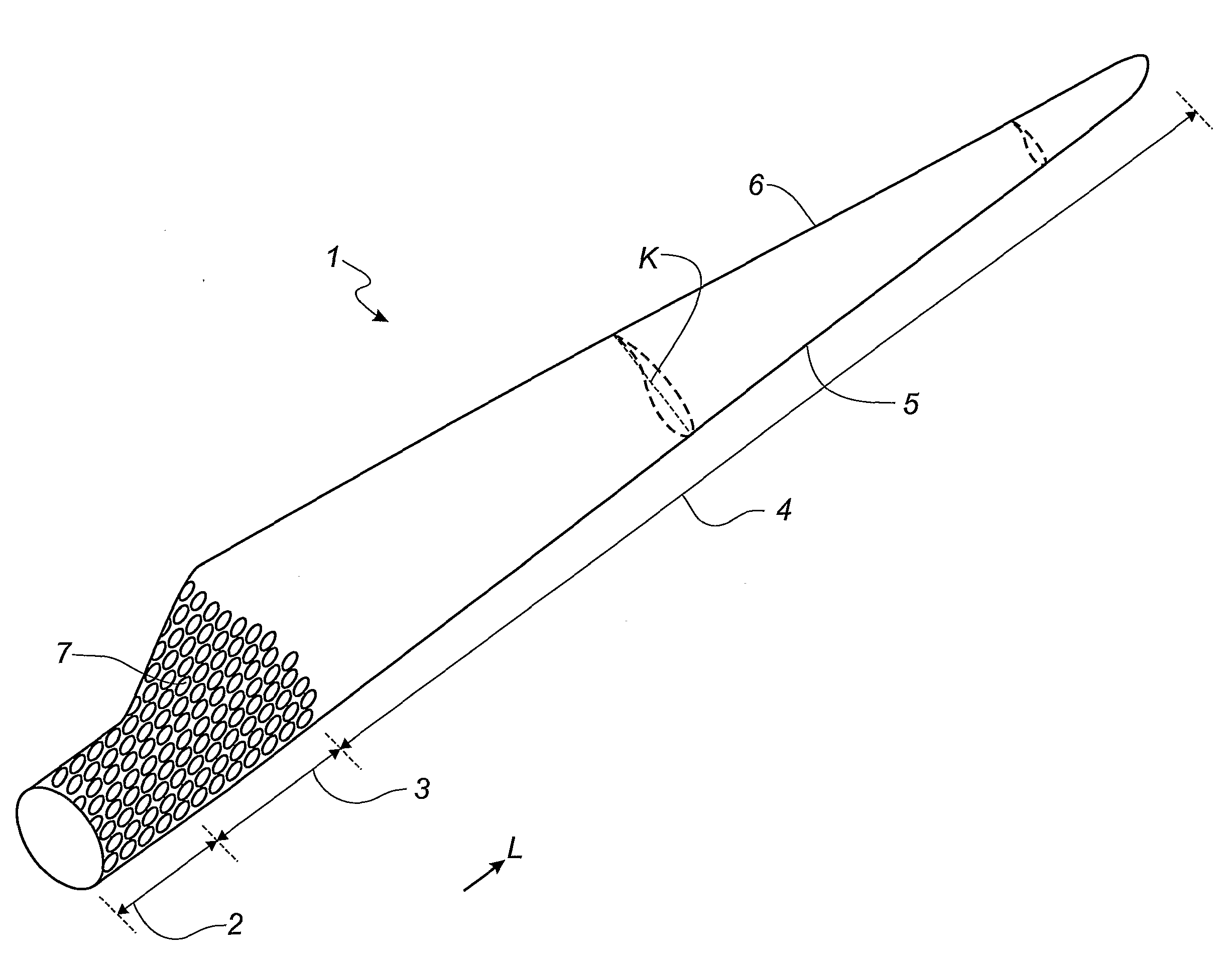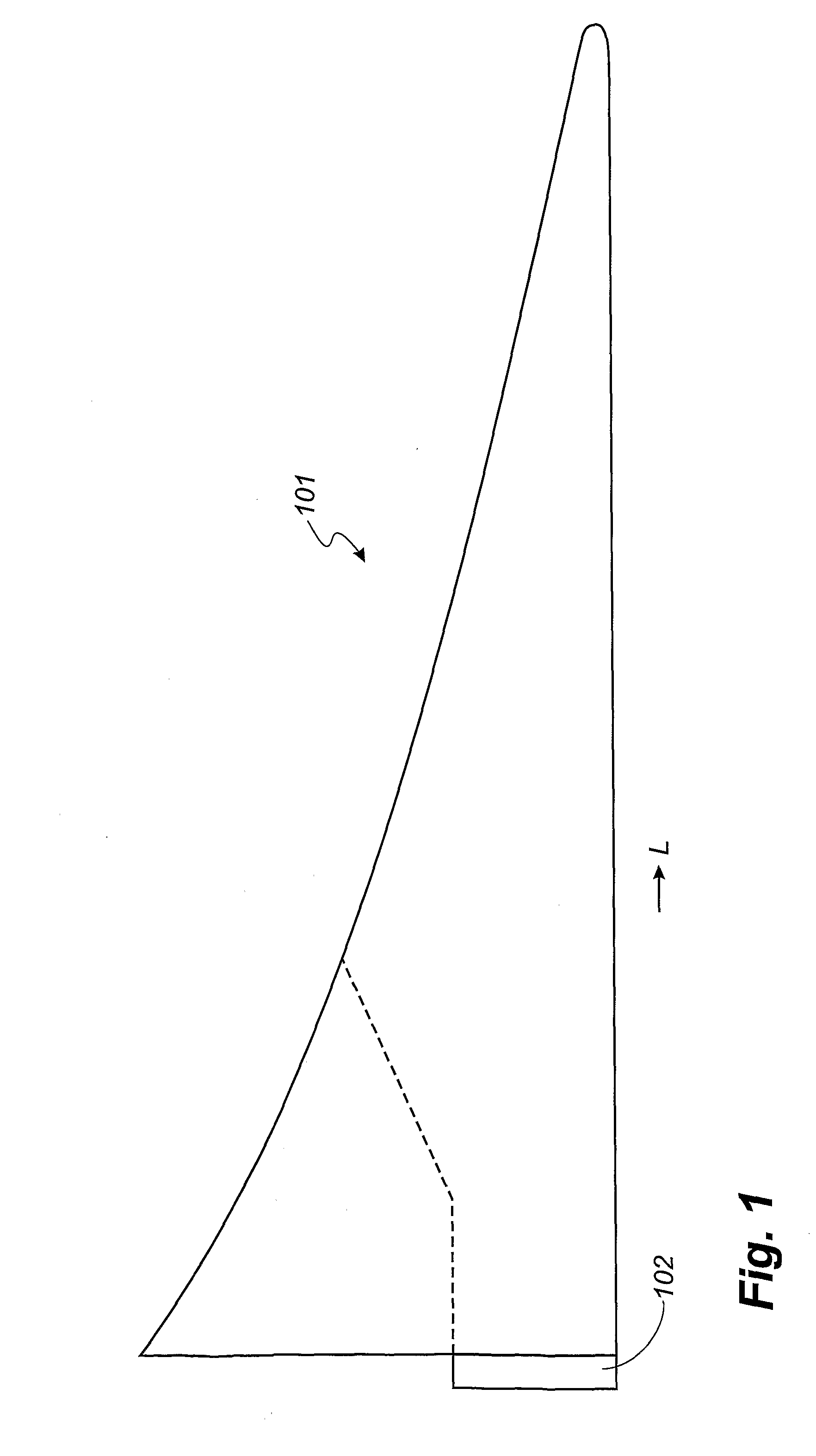Blade for a Wind Turbine Rotor
- Summary
- Abstract
- Description
- Claims
- Application Information
AI Technical Summary
Benefits of technology
Problems solved by technology
Method used
Image
Examples
Embodiment Construction
[0035]FIG. 1 shows an embodiment of an ideal blade 101 of the airfoil type. The blade is provided with a root part 102 adapted to be secured to a hub of a wind turbine. The ideal blade 101 is designed such that the width of the blade 101 decreases with increasing distance L from the hub. Furthermore, the first derivative of the width of the depicted blade 101 also decreases with increasing distance from the hub 101, which means that, ideally, the blade 101 is very wide at the root area 102. This causes problems with respect to securing the blade 101 to the hub. Moreover, when mounted, the blade 101 impacts the hub with large storm loads because of the large surface area of the blade 101.
[0036]Therefore, over the years, the construction of blades has developed towards a shape, where the outer part of the blade corresponds to the ideal blade 101, whereas the surface area of the root area is substantially reduced compared to the ideal blade. This embodiment is illustrated with a dashed...
PUM
| Property | Measurement | Unit |
|---|---|---|
| Length | aaaaa | aaaaa |
| Length | aaaaa | aaaaa |
| Length | aaaaa | aaaaa |
Abstract
Description
Claims
Application Information
 Login to View More
Login to View More - R&D
- Intellectual Property
- Life Sciences
- Materials
- Tech Scout
- Unparalleled Data Quality
- Higher Quality Content
- 60% Fewer Hallucinations
Browse by: Latest US Patents, China's latest patents, Technical Efficacy Thesaurus, Application Domain, Technology Topic, Popular Technical Reports.
© 2025 PatSnap. All rights reserved.Legal|Privacy policy|Modern Slavery Act Transparency Statement|Sitemap|About US| Contact US: help@patsnap.com



